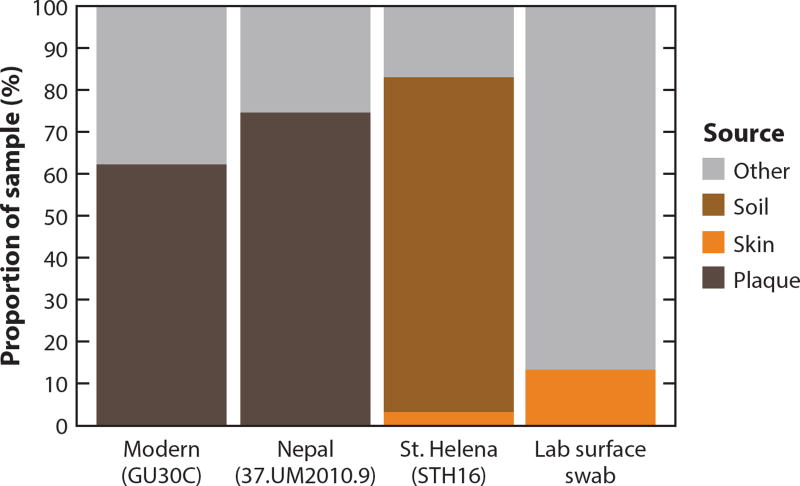Figure 7.
Bayesian source estimation of the microbial composition of dental calculus and laboratory samples. Using SourceTracker (91) with a panel of modern dental plaque, skin, and soil reference sources indicates that the modern dental calculus (GU30C) contains a large proportion of microbial DNA (>60%) originating from human dental plaque. Likewise, >70% of microbial DNA in an ancient calculus sample from a high-altitude tomb in Nepal (37.UM2010.9, dating from approximately 400–650 CE) originates from dental plaque. By contrast, microbial DNA from nineteenth-century dental calculus from the West African island of St. Helena (STH16) derives nearly entirely from soil (80%) and human skin (3%). Microbial DNA collected from the surfaces of an osteological laboratory originates from human skin and unknown sources. Consistent with these results, the modern and Nepalese dental calculus samples are dominated by phylotypes belonging to known oral-associated genera (77–80%); by contrast, only 2% of phylotypes in the St. Helena calculus are consistent with oral genera, and 64% are classified as environmental Mycobacteria spp. Data are from Reference 207.

